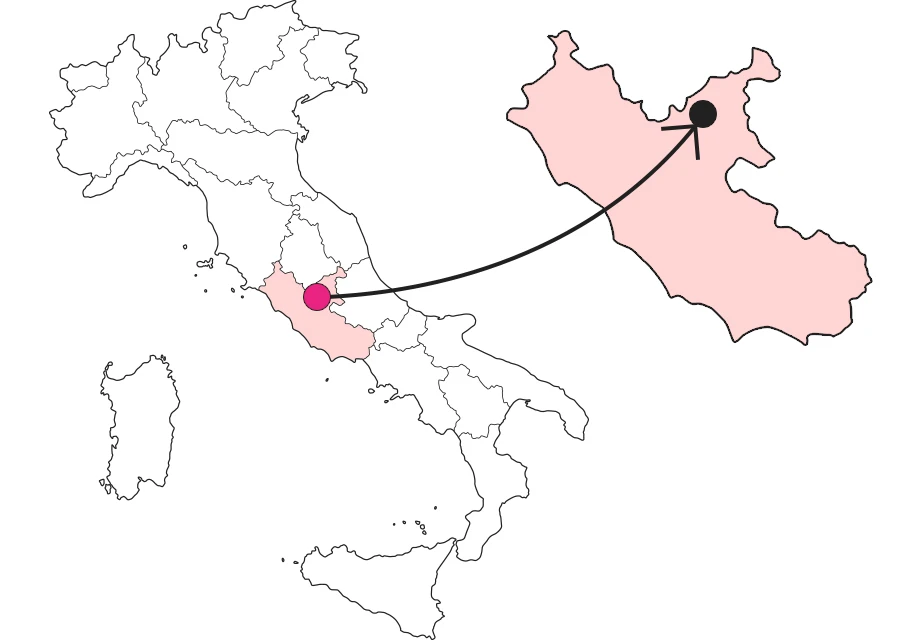SHARRYLAND


Where is

What it is and where it is
Driving along the Turanense provincial road, in the direction from Carsoli toward the Salaria and Rieti, a few kilometers from the branch to the town of Paganico, one can see on the left a mighty monolith of singular structure or rather, adopting an effective nineteenth-century description, a "stone worked in the shape of an ancient chair." It is a Roman-era tomb made by salvaging an erratic limestone boulder. The present inscription ascribes it to the Muttini family although, traditionally, it is better known in the suggestive local diction of "Written Stone."
Why it is special
This giant was not transported here, but ended up there on its own, probably falling after breaking away from the heights of Mount Cervia. It was then carved on site. Three out of four facades have been decorated and finished, while the fourth, the one facing Northeast, is bare. But it is the facade facing Southwest, toward the river, that is really important: it was this side that welcomed wayfarers, and reminded them of the Muttini family, to whom the epigraph was dedicated.
Not to be missed
Even today the monument, which appears almost stripped of all decorative appendages, retains substantially intact the epigraph on the front facing the river: P (ublius) Muttinus P(ubli) F(ilius) Pater Codia Mater P(ublius) Muttinus P(ubli) F(ilius) Ser(gia tribus) Sabin(us) F(ilius). This is one of the most significant ancient testimonies of the Turano Valley, demonstrating the remote antiquity of Roman settlements in this valley. It can only be so, since one of the family members was ascribed to the Sergia tribe.
A bit of history
The monument, made around the second half of the 1st century B.C., tells us a bit of the history of the Muttini: of the three only the last one enjoys Roman citizenship with full rights, being the only one endowed with a cognomen, Sabin[us], and to be enrolled in a tribe, the Sergia. The parents, on the other hand, lack a cognomen and are identified only by kinship terms. Moreover, we know from the presence of patronymic that the father is an ingenuus, a freeborn, but the same cannot be said with certainty about the mother, whose condition is instead silent. Within a generation we thus find an advancement of family status with definitive access to citizenship ottimo iure.
Curiosity
Downstream of the monument the presence of dry constructions has been identified : macere, pertinent to the very ancient route of the mule track that connected Paganico with the area of "opianu." This route was connected again to the main roadway that, in Roman times, led to Carseolis (the present Civita di Carsoli) and to Trebula Mutuesca (the present Monteleone Sabino).
Enter the Map of Italy's Undiscovered Wonders and find treasures where you least expect it... Inspire, Recommend, Share...
Contact
Collections
The Map thanks:
Enter the Map of Italy's Undiscovered Wonders and find treasures where you least expect it... Inspire, Recommend, Share...
Where is

Contact
Collections




